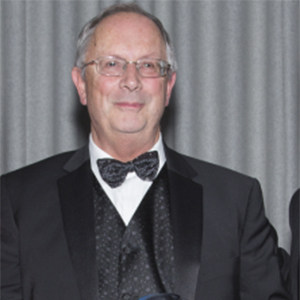The number of people using assistive technology is increasing but more funding is needed. This is one of the challenges around the provision of AT according to UK educator Dr Barend ter Haar, who is a guest presenter at the ATSA Sydney expo. The consequence of this is that procurement agencies are trying to reduce the costs to providers by commoditising products and solutions, he told F2L.
“However, the nature of the disabling effects of ageing can differ from person to person, and each individual needs an assessment so an appropriate solution can be prescribed. For example, in selecting the right wheelchair cushion for an individual, there are 30 attributes that should be taken into account. To ask a procurement department to obtain quotes for equipment when they know little or nothing about the pathologies involved, or the solutions needed, is inappropriate, and price is certainly not the first criterion to go by,” he said.
“An inexperienced purchaser or retailer can end up supplying a low cost item that does not do the job of damage prevention, but also creates more damage to the end-user.”
In the field of pressure care, and prevention of pressure ulcers, a better understanding is needed about how different layers of the skin respond to potentially damaging effects, not just from pressure, but from shear, friction, heat, and moisture.
According to ter Haar while manufacturers have been concentrating on materials to dissipate pressures more evenly, the incidence of pressure ulcers has not decreased significantly. “Recent biomedical research has shown that microclimate – heat and moisture – and effects of shear strain distorting tissues, has more damaging outcomes than pressure on its own.
“To restrict skin damage we need cushion and mattress covers that dissipate heat and moisture build-up to allow the surface to move under the skin, so the skin does not distort,” he said.
When it comes to pressure care, assessment tools such as ‘pressure mapping’ are benefitting from miniaturisation of technology to make systems more portable and less expensive. These tools help to assess where skin and underlying tissues are at most risk from changes in pressure. “The flexible pressure mapping materials and technology that have appeared over recent years can be sewn into garments to monitor forces as the person moves around.” He said these sensors can also measure temperature and moisture, and described them as being at the forefront of ‘smart’ clothing.
Other technologies which have been developed in recent years include home based systems that are placed under the mattress, or seat cushion, to monitor an individual’s pulse rate, respiratory rate, presence in bed, etc. The outputs from these systems evaluate rest and sleep quality, and indications of deterioration due to general ill health and adverse reactions to drugs. These systems can alert carers in the home , reducing the risk of falls after leaving a bed, for example, or can be sent out via the internet or mobile to alert a care centre or relative of the person’s needs.
Systems that allow this include the BamLabs’ Touch-Free Life Care (TLC), or the EarlySense Insight package. Another example of the combination of new materials, miniaturisation, and cloud based communication has been the ExoFlex. “This is an exoskeleton that is placed over the hand allowing movement of each individual joint individually and can be used to provide active or passive therapy and assessment of each finger of either hand. The controller carries its own server, which can be accessed remotely by Wi-Fi to a therapist, where progress can be monitored, and routines altered,” he said.

